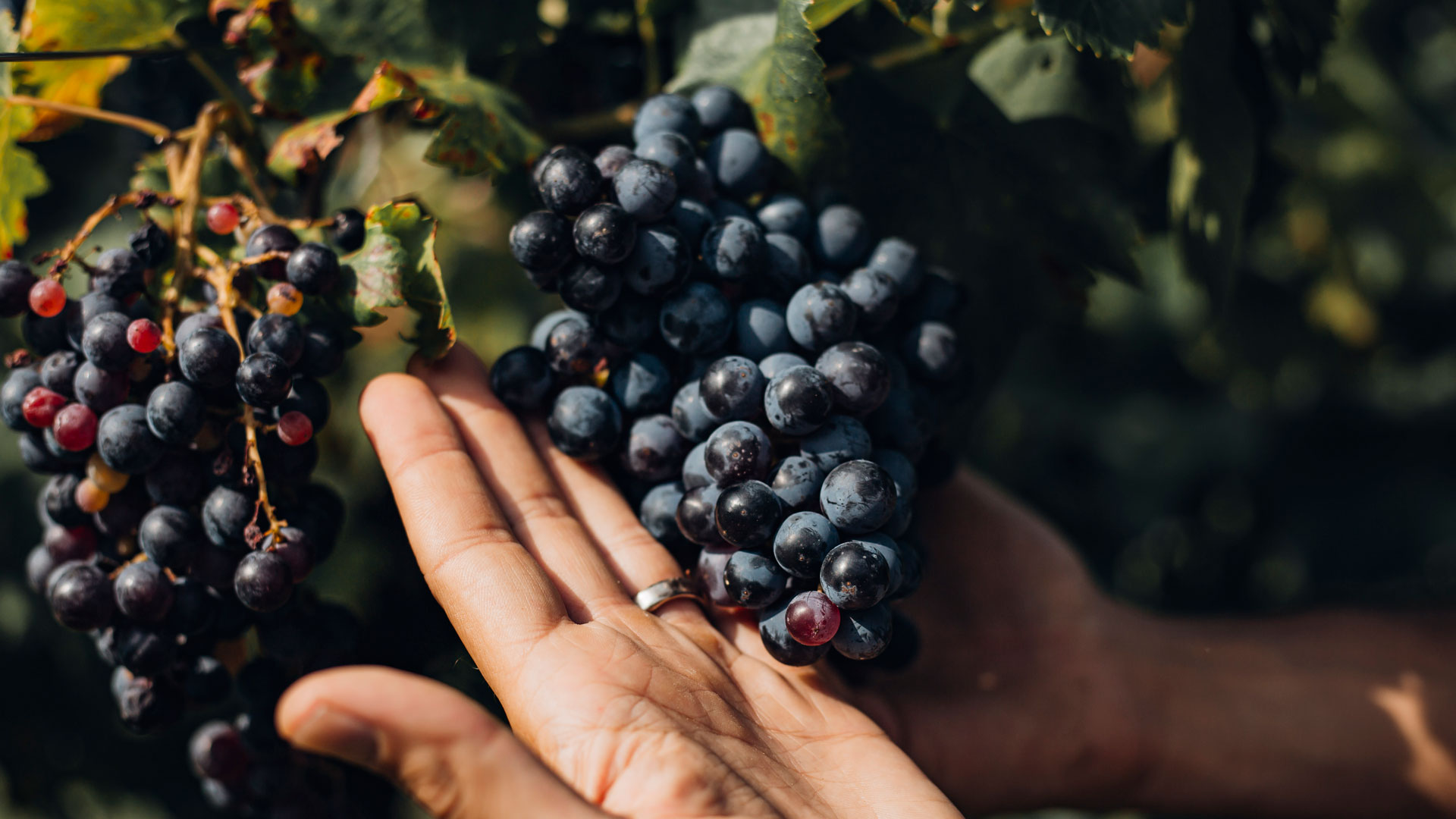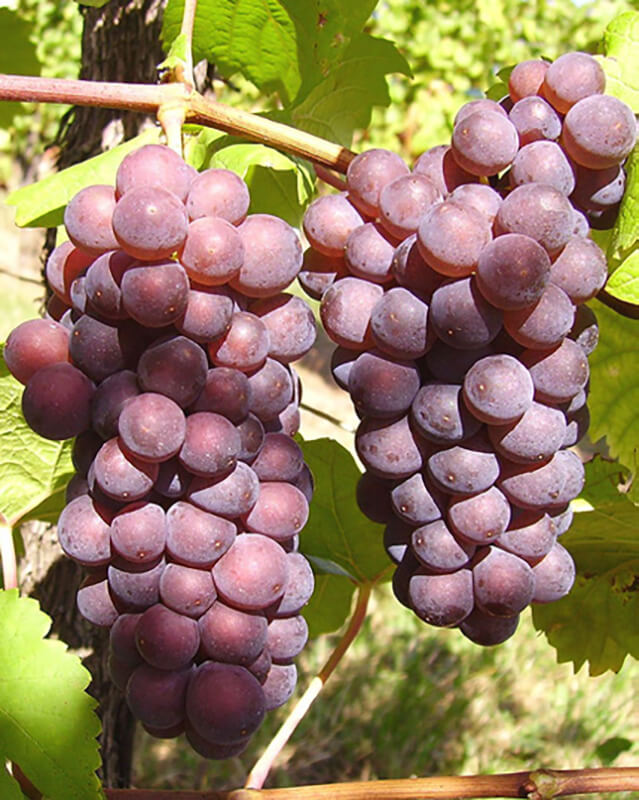Wines of the Berici Hills
The Berici Hills grapes grow on the rolling hills south of Vicenza, surrounded by forests, olive groves and Palladian villas. Symbols of the Berici Hills oenology are the indigenous Tai Rosso, the Bordeaux varieties Cabernet and Merlot and Carmenère, while among the whites the interpretations of Garganega and Pinot Grigio stand out. The resulting wines are intense, with character, capable of telling the story of the spirit and passion of our winemakers.

Wines of the Berici Hills
Colli Berici grapes grow on the rolling hills south of Vicenza, surrounded by forests, olive groves and Palladian villas. Symbols of the Berici Hills oenology are the indigenous Tai Rosso, the Bordeaux varieties Cabernet and Merlot and Carmenère, while among the whites the interpretations of Garganega and Pinot Grigio stand out. The resulting wines are intense, with character, capable of telling the story of the spirit and passion of our winemakers.
Tai Rosso
One of the symbols of Berici enology is Tai Rosso, once called Tocai rosso, which has the same genetic nature as Sardinian Cannonau, French Grenache and Spanish Garnacha. This vine is considered typical in the Berici Hills, since its presence in the area has been witnessed for hundreds of years.
This grape variety, when grown in the area of oldest tradition in the Municipality of Barbarano and neighboring municipalities, is traditionally identified with the name Barbarano.
Tai rosso is a vigorous vine that requires special exposure to light and heat to express itself best. It is perfectly adapted to the leaner and drier terroirs, which is why it has found an ideal habitat in the Berici.


TASTING NOTES

Ruby red not too intense, with garnet reflection

Fruity, with hints of violets and red berries of undergrowth

Dry, soft, slightly tannic, hints of plum and raspberry

boiled meats, bacalà alla vicentina, risottos and cold cuts
Carmenère
For more than 150 years, growers in the Berici Hills produced wines from a type of grape that, believing it to be related to Cabernet franc, they called black Bordeaux, Italian Cabernet franc, Old Cabernet, and even Cabernet del Veneto.
Effectively, the two grape varieties have a link between them: Carmenère is a natural cross between Cabernet franc and Gros Cabernet, an ancient variety from Bordeaux and its surroundings, and came to the Berici in the 19th century, as in the case of the other French varieties.
Viticulturally, it is a vigorous variety, characterized by below-average bud fertility, with medium-sized berries and a blue-black skin. It has high concentrations of methoxypyrazines, which can produce strong herbaceous or green pepper notes.


TASTING NOTES

Very deep red with blue-violet highlights

Blue berries such as blueberries and blackberries, coffee, chocolate and black pepper

Tannic, fruity and spicy, balanced

grilled meats, game, cured meats and tasty cheeses
Garganega
It is the most widespread white grape variety in the Berici Hills, where it is also called Garganego. The first historical evidence dates back to 1200, in Pietro de’ Crescenzi’s treatise in which Garganica is mentioned, but it is likely that traces of this vine were present as early as the year 1000.
Its productivity is high and constant and it has good resistance to most of the common cryptogamic diseases. The cluster is elongated, cylindrical-pyramidal, winged, and averagely sparse. These last two characteristics make it suitable for drying: in fact, it is the basis of some of the most famous sweet wines from Veneto.
The berry is medium-sized, spherical, rich in pulp. The skin is not very thick but tough and has a golden yellow color that can turn to pink in late ripening.


TASTING NOTES

straw yellow

fruity with hints of almond and white flowers

Dry, quite fresh and savory, almost tannic taste structure, persistent

appetizers and delicate first courses and fish main courses
Pinot Grigio
Pinot Grigio belongs to the Pinot family, a group of grape varieties genetically descended from Pinot Noir, which originated in Burgundy and was already cultivated in the first century AD. The term Pinot seems to derive from “pine cone” to signify both the modest size of the cluster and the characteristic one-winged, compact.
Berry is small and ovoid, often deformed by too much bunch compactness. Grey-pink, light, pruinose skin; juicy flesh with simple flavor.
Pinot Grigio can be vinified in white, yielding a straw-yellow wine with golden highlights. Or it can be left slightly in contact with the skins, yielding a wine with a characteristic coppery hue.
The Pinot Grigio grapes are often harvested early, in late August-early September, to maintain higher acidity levels and moderate the variety’s exuberant fruitiness, creating a more neutral but highly drinkable flavor profile.


TASTING NOTES

Straw yellow, golden yellow, coppery yellow

Delicate, pleasant with floral, fruity, herbaceous scents

Dry, harmonious, velvety

Appetizers, seafood starters, white meat, baked/grilled/wet fish
Merlot
It is a varietal originating in the Bordeaux region of France. It originated from a cross between Cabernet franc and Magdeleine noire des Charentes. Compared to Cabernets it was introduced in Italy later, towards the end of the 19th century. In 1926 it was planted in the experimental vineyard of Ponte di Barbarano, yielding excellent results to the point of being included among the vines recommended for postphylloxera reconstruction in the Berici Hills.
This is a vine of medium vigor, which adapts to both long and short forms of training. In the Berici, it can reach significant sugar levels while presenting medium-low acidity.
The cluster is medium-sized, on average compact, pyramidal-shaped, winged. The berries are spherical, medium in size. The skin is dark blue; the flesh is sweet, not particularly acidic.


TASTING NOTES

Ruby red with violet hues

Intense, with characteristic herbaceous and ripe forest fruit notes

Full-bodied, soft, harmonious, slightly tannic

Stewed meats, cured meats, cheeses, light roasts, braised and barbecued meats
Sauvignon
Grape variety native to France, particularly widespread in the Gironde area. The name comes from the French word sauvage (wild). It is one of the most widespread white grape varieties in the world, with which white wines of great freshness are produced, with a marked varietal imprint. It has a great ability to adapt, on the Berici Hills its presence is witnessed since the end of the 19th century, especially in the Longare area.
Clusters are fairly small, cylindrical, winged, compact. Berry medium, round, the green-golden skin fairly thick and tough. The pulp has slightly aromatic flavor.
Depending on the climate, Sauvignon grapes can give wines herbaceous or fresh fruit aromas. In any case, the resulting wines are intended for quick consumption, since aging more than a year usually does not give improved effects on organoleptic characteristics.


TASTING NOTES

Straw yellow

Delicate and typically varietal, characteristic of green bell pepper and citrus fruit

Persistent, balanced and full-bodied

First and second courses of fish and shellfish

Tai Rosso
One of the symbols of Berici enology is Tai Rosso, once called Tocai rosso, which has the same genetic nature as Sardinian Cannonau, French Grenache and Spanish Garnacha. This vine is considered typical in the Berici Hills, since its presence in the area has been witnessed for hundreds of years.
This grape variety, when grown in the area of oldest tradition in the Municipality of Barbarano and neighboring municipalities, is traditionally identified with the name Barbarano.
Tai rosso is a vigorous vine that requires special exposure to light and heat to express itself best. It is perfectly adapted to the leaner and drier terroirs, which is why it has found an ideal habitat in the Berici.

Carmenère
For more than 150 years, growers in the Berici Hills produced wines from a type of grape that, believing it to be related to Cabernet franc, they called black Bordeaux, Italian Cabernet franc, Old Cabernet, and even Cabernet del Veneto.
Effectively, the two grape varieties have a link between them: Carmenère is a natural cross between Cabernet franc and Gros Cabernet, an ancient variety from Bordeaux and its surroundings, and came to the Berici in the 19th century, as in the case of the other French varieties.
Viticulturally, it is a vigorous variety, characterized by below-average bud fertility, with medium-sized berries and a blue-black skin. It has high concentrations of methoxypyrazines, which can produce strong herbaceous or green pepper notes.

Garganega
It is the most widespread white grape variety in the Berici Hills, where it is also called Garganego. The first historical evidence dates back to 1200, in Pietro de’ Crescenzi’s treatise in which Garganica is mentioned, but it is likely that traces of this vine were present as early as the year 1000.
Its productivity is high and constant and it has good resistance to most of the common cryptogamic diseases. The cluster is elongated, cylindrical-pyramidal, winged, and averagely sparse. These last two characteristics make it suitable for drying: in fact, it is the basis of some of the most famous sweet wines from Veneto.
The berry is medium-sized, spherical, rich in pulp. The skin is not very thick but tough and has a golden yellow color that can turn to pink in late ripening.




